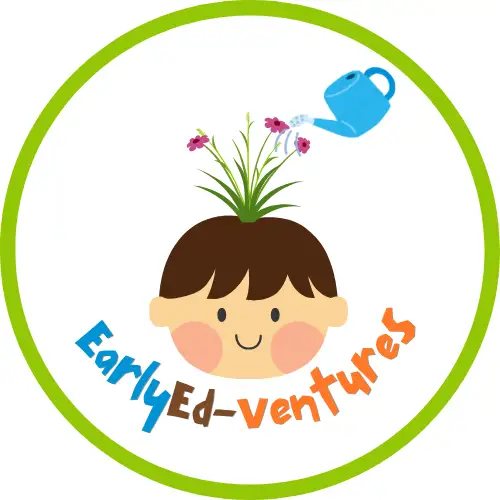In today's fast-paced world, children's cognitive development is a major concern for parents and educators. With the right tools and techniques, learning can be fun, engaging, and highly effective. Two essential components that support children's learning are brain gym activities for kids and educational printables for kids. These resources can make a significant difference in their ability to focus, understand concepts, and retain knowledge. Let's explore how these activities and printables help children develop essential skills.
The Power of Brain Gym Activities for Kids
Brain gym activities are simple physical exercises designed to enhance cognitive function and improve learning abilities. These exercises are based on the idea that movement stimulates the brain and helps children process information more effectively. Whether at home or in the classroom, incorporating these activities into a child's daily routine can significantly impact their academic performance and overall development.
Benefits of Brain Gym Activities:
- Enhances Concentration and Focus – Engaging in specific movements helps children pay better attention in class and during homework sessions.
- Boosts Memory and Retention – Physical activities stimulate brain function, helping children remember and recall information more effectively.
- Improves Coordination and Motor Skills – These exercises refine fine and gross motor skills, essential for writing, reading, and other academic tasks.
- Reduces Stress and Anxiety – Movement-based exercises relax the mind, allowing children to approach learning with a calm and focused attitude.
- Encourages a Positive Attitude Towards Learning – Fun and interactive exercises create an enjoyable learning experience, making children more enthusiastic about education.
Popular Brain Gym Activities for Kids
There are several effective brain gym exercises that are easy to practice and beneficial for children’s cognitive development. Some of the best include:
1. Cross Crawl Exercise
This simple activity involves touching the right hand to the left knee and vice versa. It helps in enhancing coordination and balancing brain hemispheres, improving reading and writing skills.
2. Lazy Eights
Children draw the number eight (infinity symbol) in the air or on paper with their hands. This exercise strengthens visual tracking skills and improves eye coordination, essential for reading.
3. Brain Buttons
Placing two fingers on the soft area below the collarbone and rubbing gently while taking deep breaths enhances brain activation, boosts energy levels, and improves focus.
4. Hook-Ups
This activity involves crossing arms and legs and then pressing fingertips together. It helps in calming the nervous system, reducing stress, and improving concentration.
5. Double Doodle
Children use both hands to draw simultaneously. This technique stimulates creativity, enhances fine motor skills, and improves handwriting abilities.
The Role of Educational Printables for Kids
While brain gym activities develop physical and cognitive skills, Educational Printables for Kids provide structured learning opportunities. These printable resources cover various subjects and skills, making learning enjoyable and effective.
Advantages of Educational Printables:
- Interactive and Engaging – Visually appealing worksheets capture children's attention and make learning fun.
- Encourages Independent Learning – Printables allow children to work at their own pace, building confidence and problem-solving skills.
- Supports Different Learning Styles – Whether a child learns better through visuals, writing, or hands-on activities, printables cater to diverse learning preferences.
- Enhances Academic Skills – These resources strengthen subjects like math, reading, writing, and science through structured exercises.
- Convenient and Easily Accessible – Printable worksheets can be used anytime, anywhere, providing flexibility in learning.
Types of Educational Printables for Kids
To maximize learning potential, it's essential to use a variety of printables that cater to different age groups and subjects. Here are some effective types:
1. Alphabet and Phonics Printables
For early learners, alphabet and phonics worksheets help develop reading skills. These activities include letter tracing, matching sounds, and identifying words.
2. Math Worksheets
Mathematical printables cover topics like counting, addition, subtraction, multiplication, and division. These worksheets make math fun and interactive.
3. Handwriting Practice Sheets
Improving handwriting skills is crucial for young children. Printables with tracing letters, numbers, and words help develop neat and legible handwriting.
4. Science and Nature Printables
Exploring science concepts through worksheets makes learning more engaging. Activities like labeling body parts, understanding the water cycle, and exploring animal habitats encourage curiosity.
5. Coloring Pages and Creative Activities
Artistic printables, including coloring pages and creative writing prompts, stimulate imagination and enhance fine motor skills.
How to Incorporate Brain Gym Activities and Educational Printables in Daily Routine
To maximize the benefits of these resources, parents and educators should integrate them into children’s daily routines. Here are some practical tips:
1. Create a Daily Learning Schedule
Set a specific time for Brain Gym Activities for Kids before starting academic lessons. This practice prepares the brain for better focus and learning.
2. Use Printables as Fun Learning Tools
Instead of traditional learning methods, introduce educational printables for kids in a playful manner. For example, use math worksheets as part of a game or storytelling session.
3. Combine Movement with Learning
Integrate exercises with printable activities. For example, before working on handwriting printables, engage in a finger exercise to strengthen fine motor skills.
4. Encourage Self-Paced Learning
Allow children to explore worksheets at their own pace. This method fosters independence and enhances problem-solving abilities.
5. Make Learning a Family Activity
Parents can participate in exercises and printable activities with their children, creating a supportive and enjoyable learning environment.
Conclusion
Combining brain gym activities for kids with educational printables for kids creates a well-rounded learning experience that enhances cognitive development, motor skills, and academic performance. These tools not only make learning more engaging but also ensure that children develop essential life skills from an early age. By integrating these activities into daily routines, parents and educators can foster a love for learning that lasts a lifetime.





Comments